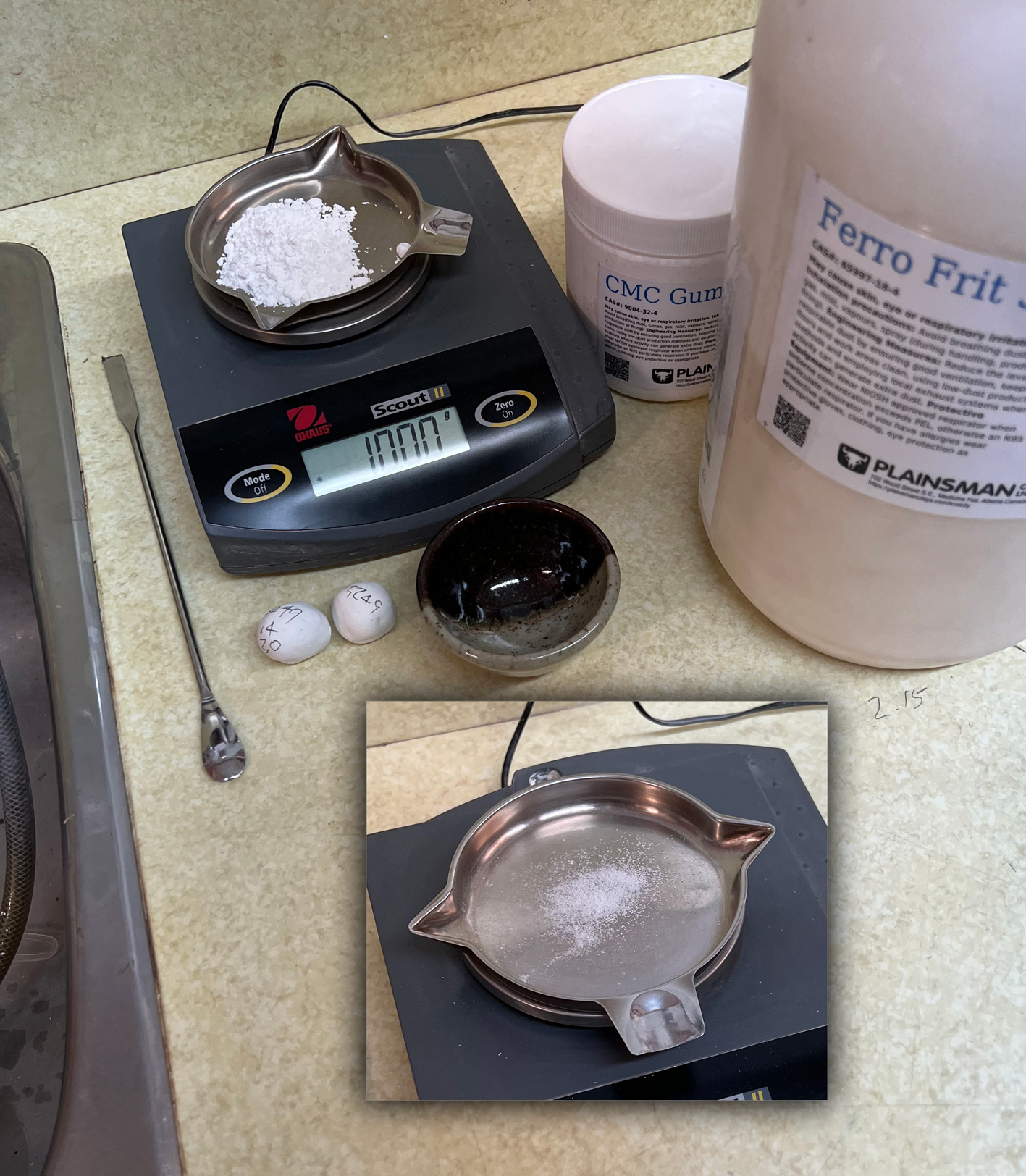| Monthly Tech-Tip | No tracking! No ads! | |
Glaze Melt Fluidity Not Evident on Typical Tests
We wanted to compare the melt fluidity of G2934Y (left) to G2934 (right). To do that we prepared GBMF test balls (see below). The forming and drying process leave a flat spot so the gumball-sized balls are easy to place on a porcelain tile. During firing, they flatten out. The degree to which they do acts as a measure of the flow (when compared with another). Many characteristics that one would not observe on glaze tiles reveal themselves in this test. In this case, we needed to know if the melt flow was at least as good. This proves it is better (the ball on the left has flattened and spread out more). Reactive glazes tend to be the norm in recent years, the main characteristic that produces their fired appearance is the high melt fluidity.
Related Pictures
Preparing balls for a melt fluidity test using CMC gum

This picture has its own page with more detail, click here to see it.
We use 11g of the material being tested, e.g. a frit, (the right amount for one ball), 0.11g CMC (1%). Of course, you need a 0.01g scale to be able to accurately weigh 0.1g (that is a really small amount). Put them in a small ziplock bag, zip it to entrap air and roll the zipper down to inflate it. Shake well to mix. Stir the powder into water (~5-8g) in a small bowl. Pour it onto a plaster slab - it dewaters very quickly (e.g. as little as 10 seconds) - just as the water sheen is gone, peel it up with a rubber rib. Smear it back down and peel it up every few seconds until it is plastic and formable (but not sticky). For better formability use 1.5% CMC gum - however, the ball will dry slower - drying time is an issue with this method, you will need a heat lamp or other drier of some sort (e.g. a dehydrator). You will also need a plaster surface to absorb the excess water (which invariably happens).
Forming a glaze into balls for melt fluidity testing

This picture has its own page with more detail, click here to see it.
The vast majority of glazes are somewhat plastic (but less than clay bodies). They can thus be dewatered on a plaster surface and formed. Why do this? To make 9-10 gram balls and fire them on flat tiles (or inclined flow testers) to see their melting characteristics. We call this the GBMF test, it is surprising how much it can tell you about a glaze or melting material. To make the ball, mix the slurry well and pour a little on the plaster. It should dewater in less than 30 seconds (although there are exceptions e.g. glaze with Gerstley Borate). As soon as the water sheen is gone, scrape it up with a rubber rib, hand-knead it and flatten it back down to dry a little more if needed (leave it only for five or ten seconds and rework it. Repeat until it is stiff enough to form balls of about 12 grams. Stamp them with ID numbers and dry them.
Videos
Links
| Glossary |
Melt Fluidity
Ceramic glazes melt and flow according to their chemistry, particle size and mineralogy. Observing and measuring the nature and amount of flow is important in understanding them. |
Got a Question?
Buy me a coffee and we can talk

https://digitalfire.com, All Rights Reserved
Privacy Policy

